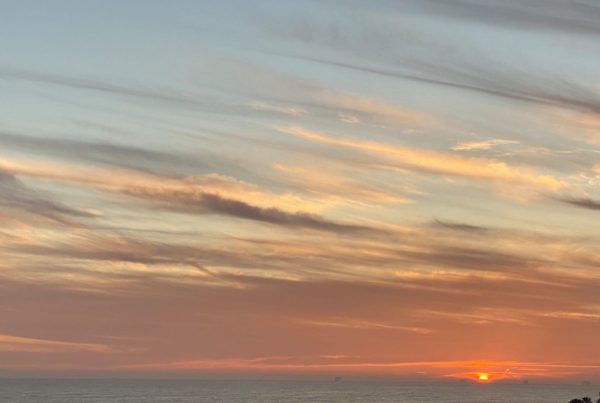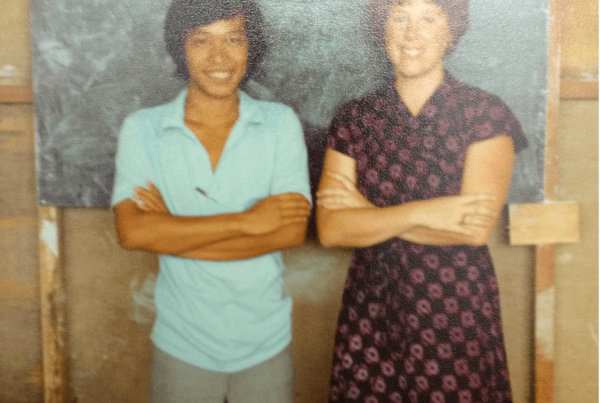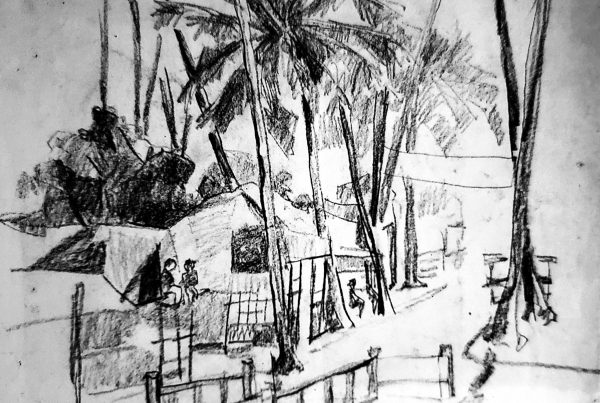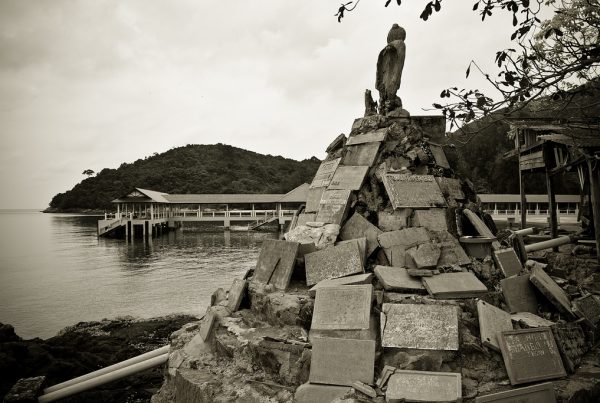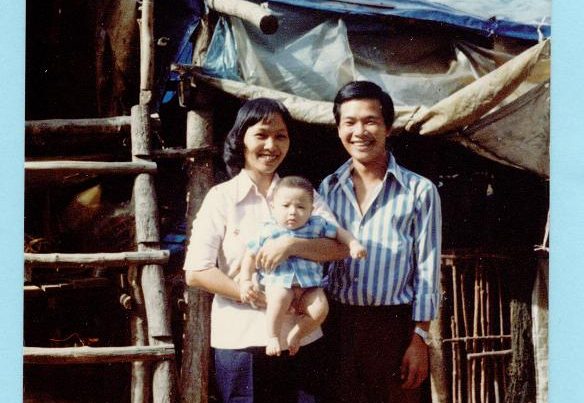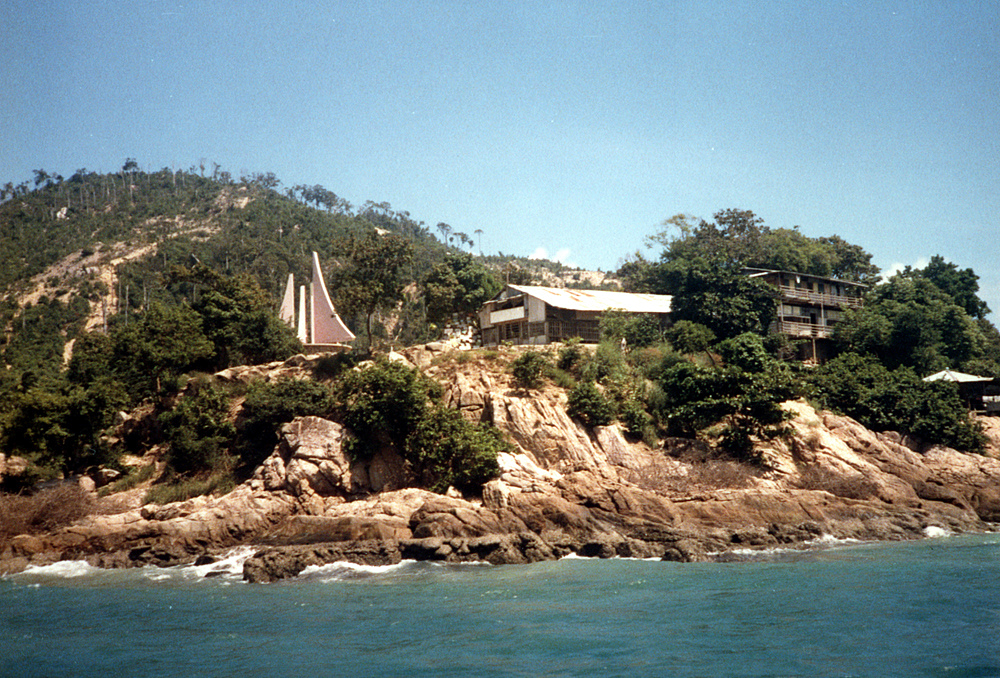
Whenever we heard of boat people landed at the east coast of Malaya, it is always the concern of every Malaysian, the concern to know what is the treatment they will face. The government policy of turning them away into international water, was very unfriendly policy not only to refugee, but also to many Malaysian. Malaysian only accept Vietnamese Cham refugee, who are Muslim, other Vietnamese are turned away, unless they were able to go ashore and transfer to the refugee camp; many may have died in international water or attacked by pirates(Thai, Philippines and Indonesian), and it was also reported that some were attacked by uniform units of some countries, which committed crimes, including rape and robbery. Some are lucky and able to replace in 3rd countries, some are not that lucky and never hear again….
Many years later, some of the boat people are still tormented by their past and the journey as boat people; many did not wanted to talk about it…….
I was in Kuantan in 1984-1996 , when the transit camp at Jalan Gambut, Kuantan was still operating. It was operated at the premise of Red Cross State Office(known as Malaysian Red Crescent Society), near the state football association building. Behind the camp was the side road leading to Jalan Bukit Ubi, at that time one of the busiest street in Kuantan. There was a supermarket there. Whenever you by pass the side lane beside state football association building, you can see the Vietnamese refugee behind the fence, looking out to the outside world. Ihe refugee were not allow to venture outside their camp, they were on transits to the Bukit Besi Camp, Kuala Lumpur. Bukit Besi Camp was the trailer like buildings given by the Danes form the basis of the Sungei Besi Transit Camp near Kuala Lumpur, Malaysia. That is my personal encounter to Vietnamese refugee face-to-face. Most of the time, we just read the news about them from the local newspaper.
Thuyền Nhân(Boat People)
Personally, I divided the Vietnamese boat people from 4 separate periods;
(1) First Waive: 1975 Immediately after the Vietnam War, where most are refugee from war(war refugee)- mainly people related to the South Vietnam civil or military, and businessmen who are worried that the new communist government may take action against them. They were mostly picked up by the 7th fleet of US Navy.
(2)Second Wave: 1975-1979 After the communist took over Vietnam, many are refugee from communist(political refugee)- escape from hardship induced by the political policies and changes, and businessmen where their businesses are nationalized by government. Since the 1975 American evacuation, the flow of refugee went down to only to 377 in 1975, and 5,619 in 1976 and by 1977 it become a flow of 21,276; by the end of 1978, a flood of 106,489; and in the first month of 1979, a torrent 106,604.
(i)May 1975 to March 1978 – The imposition of socialism to the south, the establishment of NEF(New Economic Zones), former civilian and military staff of Republic of Vietnam(South Vietnam) and US Army were sent to reeducation camp, where they were to do hard labor and were under survival diet. Many did not survive the change and escaped back to their original location, and planned escape from Vietnam. There were minimal departure in 1975 and 1976, as South Vietnamese are adapting to the new Communist regime. But in 1977, the refugee from Vietnam , become a flow of 21,276 people.
(ii)April to December 1978- Facing growing economic difficulties, the government initiated new program of agricultural collective farms. The program failed and was abandoned. The political and ethnic oppression, and mobilization of people into arm forces. The number of Vietnamese boat people increased, and 160,000 Hoa escaped overland to China(this was not included in UNHCR data)
(iv) Jan- Dec 1979 – Vietnam was at war with Cambodia and China. The mobilization of one million men into the armies, and expulsion of Hoa( Vietnamese Chinese) caused an exodus of boat people. Vietnam finally invaded Cambodia, and it drained Vietnam all its economic resources.
(3) Third Wave: 1980 -1986 “economic migrants” period(may be economic refugee), they are not like the current illegal migrants/workers. Most of them are Hoa Vietnamese Chinese, who suffered from the limited business opportunity and discriminating policy toward them as business people or minority.
(i) Jan- Dec 1980 – Many Asian countries forced Hanoi to control illegal departures, which temporarily cut down the departure. But it picked up again as economic conditions worsen. The push back policy initiated in 1979 was temporary placed on hold.
(4) Forth Waves: Post 1986 to 1992- Some may be economic refugee, but there were some minors, who were sent out by parents to reunion with other family members who have resettled in other countries. Some were sent to initiate with the hope of first link in the 3rd country,where they can help to sponsor their parents to escape. It may be “social refugee”.
Right after the Vietnam War ended on April 30, 1975, thousands of educated citizens and scholars were punished, imprisoned, killed, or assassinated. Hundreds of thousands of South Vietnamese government and army officers were put in concentration camp for unlimited time. Their families were forced to move out to controlled inhospitable lands called New Economic Zones or the outskirts of large cities.
In May 1975, Malaysia’s shores saw the arrival of the first weather-beaten boat, carrying 47 people from Viet Nam. They were the first of what later came to be known as the “boat people”, hundreds of thousands of Indo-Chinese refugees who fled to neighboring countries in the successive communist victories in Viet Nam, Cambodia and Laos.(source: UNHCR)
Pulau Bidong, the island off east coast of Malaysia, in the South China Sea; is the island which played significant role for the boat people , the Vietnamese refugee. It is the temporary place for them, prior to relocate to the 3rd countries. It is the place half way to their future life in the new country. It is the place they will never forget, sweet or sour, a place that is important in their life.
Pulau Bidong is a small island in Terrenganu, Malaysia. It is situated off the coast of Terengganu in the South China Sea. It is accessible from the coastal town of Merang. A refugee camp for Vietnamese boat people was set up on this island by Malaysian government and UNHCR. It was officially opened on August 8th, 1978 and closed on Oct. 30th, 1991. In August 1978, the Government gazetted Bidong as a refugee camp and it became off limits to the public.
At its height, Bidong had some 40,000 refugees at any given time and it was a veritable mini-Saigon with its sprawling settlements of wood and zinc. From the mainland, the island lights were visible at night (at least before the curfew hours of 11.30pm to 6am). By the time it was closed, about 250,000 refugees went through this camp.
Over 250,000 Vietnamese refugees landed on Malaysia. Since 1975, the UN refugee agency has helped resettle some 240,000 Vietnamese refugees from Malaysia to third countries, while some 9,000 others opted to return to Viet Nam. Over 240,000 Vietnamese refugees in Malaysia were accepted by third countries, mostly by the U.S., Canada, Australia and France. What happen to the remaining 1,000 people, some of them escaped again by boat to Australia, like Hieu Van Le (Vietnamese: Lê Văn Hiếu), Lieutenant Governor of South Australia. Others may have died in the camp due to sickness or other reasons.
In 1989, Vietnam agreed to the repatriation of the boat people which finally ended the sea exodus of its people.
By 1991, Bidong was no longer needed as a refugee detention centre and the Federal Government officially handed back the island to the Terengganu government. But its status as a restricted zone lingered until 1999.
Cherating Camp, near Kuantan, located along the East coast of Malaya was used to be another one, but it later become processing and holding center for Cham Muslim.
After Pulau Bidong camp was closed, over 9,000 refugees were deported back to Vietnam. The forced repatriation met strong protests from the remaining refugees. On August 28, 2005 the last Vietnamese refugees were repatriated back to Vietnam.
The 43-year-old Doan Van Viet – marked a significant moment in Malaysia’s history. Doan was the last remaining Vietnamese refugee in Malaysia out of over 250,000 Vietnamese refugees who had landed on the eastern shores of Malaysia some 20 years ago.(source: http://www.unhcr.org/43141e9d4.html). There was another refugee camp, Sungei Besi Camp. When the Pulau Bidong camp closed in 1990, Doan moved to Sungai Besi. This camp was also closed in 1996, and he had to blend in to local Malaysian life outside the camp.
“The voluntary repatriation of the last Vietnamese refugee from the boat people period marks the end of an important chapter in the history of refugees in Malaysia,”. “It also shows that a permanent solution can be found for a refugee situation. The fact that Doan Van Viet now has reason to be optimistic about his future is in part due to the efforts of UNHCR staff in Malaysia over the past 20 years. I wish Doan Van Viet and his partner all the very best for rebuilding their lives in Viet Nam.”
More than 500 Vietnamese boat people left the Sungai Besi transit camp here today in the start of the final push to send home some 3,000 of the Vietnamese boat people still left in Malaysia.
According to Malaysia’s national news agency Bernama, 317 boat people left the Sungai Besi camp earlier today in 11 buses for Tanjung Gelang near Kuantan where they will board a navy vessel for their journey home. Another batch of 215 boat people, who were sent home under a voluntary repatriation program, left the camp today .
18-4-1996
In Malaysia, the prospect of a forced return has touched off two riots in the last six months in the Sungai Besi camp in the capital city of Kuala Lumpur. In the last of these, on Jan. 18, one Vietnamese was killed and 24 people, including seven police officers, were hurt. A decisive factor, he said, was the announcement last month by the United Nations High Commissioner on Refugees that it would stop financing the camps in Southeast Asia as of June 30. “That was a clear message to the people still in the camps that they have no more choice but to go home,” he said.
The Vietnamese in the Sungai Besi camp had clearly given up their struggle as they were marched single file before dawn today to board busses for the five-hour ride to this small port city on the Malaysian east coast. Almost all the 35,000 Vietnamese remaining in Southeast Asia’s camps have been judged to be “economic migrants” rather than genuine refugees fleeing persecution and deserving of protection. Admiral Yaacob said 3,128 Vietnamese remain in two camps in Malaysia. Of these, about 1,500 have agreed to sign voluntary return forms, allowing them to take the quicker and more comfortable flight home by aircraft.
The others have so far refused to volunteer, after their years of struggle, and are opting for the more arduous and humiliating journey in the hold of the Sri Inderapura, a 7,000-ton landing craft that was bought last year from the United States, where it was known as the Spartanburg County.
Admiral Yaacob , director of Malaysia’s task force on illegal immigrants, said he hoped that the forced return today would help persuade more of the Vietnamese to return voluntarily. Already, he said, today’s total was reduced from more than 500 when many of the holdouts chose instead to volunteer.
Shortly after the departure of the 317 involuntary returnees from the Sungai Besi camp this morning, 216 volunteers were bused to the airport, where they were to board an Air Vietnam flight for Ho Chi Minh City.
(extract from New York Times, http://www.nytimes.com/1996/04/19/world/boat-people-embark-on-sad-voyage-home.html)
Refugee Camp in MALAYSIA:
State of Kelantan
– Kemumin Camp (Kelantan)
– Pengkalan Chepa Camp (Kelantan)
– Kota Bahru (Kelantan
State of Trengganu
– Pulau Besar (Terrengganu)
– Pulau Bidong (Terengganu)
– Batu Rakit (Terengganu)
– Cabang Tiga (Terengganu)
– Jetty JKP Pulau Kambing (Terengganu)
– Marang (Terengganu)
– Pulau Tenggul, Dungun (Terengganu)
– Kelulut Transit Camp (Terengganu)
State of Pahang
– Pantai Chendor (Pahang)
– Cherating (Pahang)
– Tanjung Gelang (Pahang)
– Penggorak (Pahang)
– Beserah (Pahang)
– Kuantan (Pahang)
– Anak Air (Pahang)
– Kuala Pahang (Pahang)
– Tanjung Batu, Nenasi (Pahang)
– Nenasi (Pahang)
– Pulau Tioman (Pahang)
– MRCS Camp, Jalan Gambut (Pahang)
State of Johore
– Pantai Penyabong, Endau (Johor)
– Kampung Air Papan, Mersing (Johor)
– Pulau Tengah (Johor)
– Kampung Sedili Besar (Johor)
– Desaru (Johor)
– Renggit (Johor)
– Sri Pantai Transit Camp, Mersing (Johor)
It is sad to read about the story of the ex-refugee from boat people, where their encounter with some Malaysian were not positive.either policy wise or greedy villagers who took opportunity to rob them. However our NGO, especially Red Crescent Society and some Chinese villagers who had helped the boat people by providing food and water, were highly thankful by the ex-boat people. Humanitarian work cannot be based on race or religion line, it need to be human first, we do not treat another human worst than others, but treat other better than others. That is discrimination and against human right. Some of the politician who support the unfriendly refugee policy are still around today. But sad to say, history repeated again today………
The question, are we on the way to being developed nation? then our refugee policy need to be developed too, that is the human value we need to learn.
I hope the history of Vietnamese Boat People will remind us of the refugee and IDP from/in Burma, the awareness of past refugee history will help us to understand and aware of the problems faced by the current refugee issues. Malaysia need to learn from the mistakes of the refugee policy on Vietnamese boat people, many of them become useful citizen to the 3rd countries they went. Protect the right of refugee and provide humanitarian help and provide them job opportunity is better alternative than accepting illegal immigrants and excessive migrant workers who have created social issues to the nations.
Related articles:
- Long night’s journey into day the odyssey of indochinese refugees(1985), by Peter I. Rose ,published by Springer New York, Volume 22, Number 3 / March, 1985
- Boat People Embark on Sad Voyage Home, by SETH MYDANS, The New York Times, April 1996, http://www.nytimes.com/1996/04/19/world/boat-people-embark-on-sad-voyage-home.html
- Last Vietnamese boat refugee leaves Malaysia, By Yante Ismail,30 August 2005 ,UNHCR Malaysia, http://www.unhcr.org.my/cms/news-and-events/news-300805
- Forgotten isle, http://www.pinganchorage.com.my/news_press_release/Star_Bidong02.htm
- Pulau Bidong: Vietnamese Boat People in Malaysia, by Ee Lin Wan, http://boatpeople75.tripod.com/
- Vietnamese Tells Of Treat Before Robbery, NST dated 21-8-1980, http://news.google.com/newspapers?nid=1309&dat=19800821&id=sLUTAAAAIBAJ&sjid=9Y8DAAAAIBAJ&pg=6964,3874956
Source: http://teochiewkia.blogspot.com/2009/12/pulau-bidong-malaysia.html

